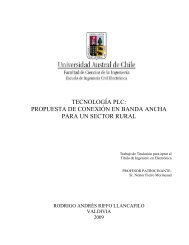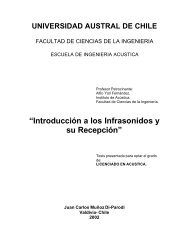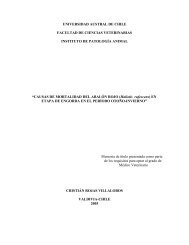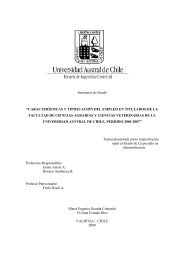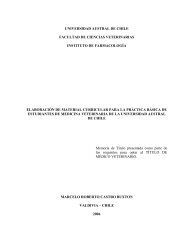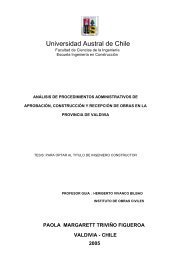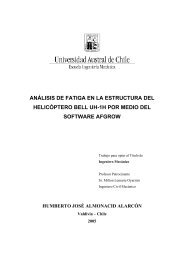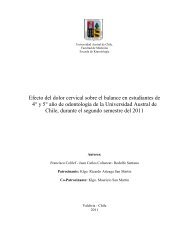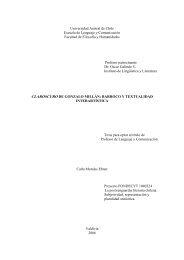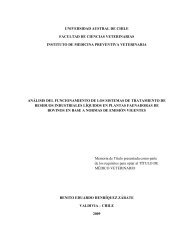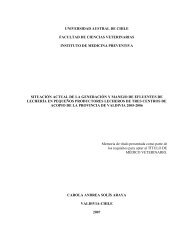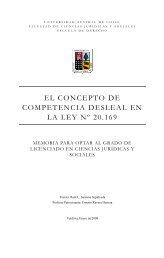Diversidad y control biológico de insectos - CyberTesis UACh ...
Diversidad y control biológico de insectos - CyberTesis UACh ...
Diversidad y control biológico de insectos - CyberTesis UACh ...
You also want an ePaper? Increase the reach of your titles
YUMPU automatically turns print PDFs into web optimized ePapers that Google loves.
Diversity.<br />
To <strong>de</strong>termine whether treatment affected diversity, we calculated Shannon in<strong>de</strong>x as<br />
= − H '<br />
S<br />
∑<br />
i=<br />
1<br />
p p ln<br />
i i<br />
where pi = proportion of individuals represented by each taxon; i = i-th species and S =<br />
observed number of species. As Shannon in<strong>de</strong>x is sensitive to changes in rare species, we<br />
used it in conjunction to other community metrics.<br />
Species richness and rarefaction statistics.<br />
Large differences on abundance were observed between treatments. As treatments with<br />
more individuals may have artificially inflated species richness, we employed rarefaction<br />
statistics to compare species richness between sites while <strong>control</strong>ling for abundance<br />
differences (Hurlbert 1971). Because of differences at the taxonomic resolution of groups,<br />
we will use species richness and taxa richness interchangeably.<br />
Species richness was expressed as the number of expected species (E(S)) within a sub-<br />
sample of n specimens. The size of the sub-sample (n) used for comparing treatments was<br />
equivalent to the least abundant treatment at every sampling date.<br />
Evenness.<br />
We applied Hurlbert’s probability of interspecific encounters (PIE; Hurlbert, 1971) as an<br />
evenness measure, which establishes the probability of encounters between two individuals<br />
of different species, assuming that every individual in the collection can encounter all the<br />
other individuals. This in<strong>de</strong>x has a low sensitivity for rare species and gives more<br />
importance to evenness of distribution of individuals between species (Barbieri et al.,<br />
1999), thus it provi<strong>de</strong>s information complementary to the Shannon in<strong>de</strong>x. In addition, PIE<br />
is unbiased by sample size and number of species in a sample, unlike most other evenness<br />
in<strong>de</strong>xes. We used the species-richness module of ECOSIM (1000 iterations) to test<br />
differences in arthropod evenness (Gotelli and Colwell, 2001) as<br />
PIE<br />
⎡ N ⎤⎡<br />
⎢ ⎥⎢1<br />
−<br />
⎣ N + 1⎦⎢⎣<br />
= ∑ i<br />
⎛<br />
⎜<br />
⎝<br />
Ni<br />
N<br />
⎞<br />
⎟<br />
⎠<br />
2<br />
⎤<br />
⎥<br />
⎥⎦<br />
109



